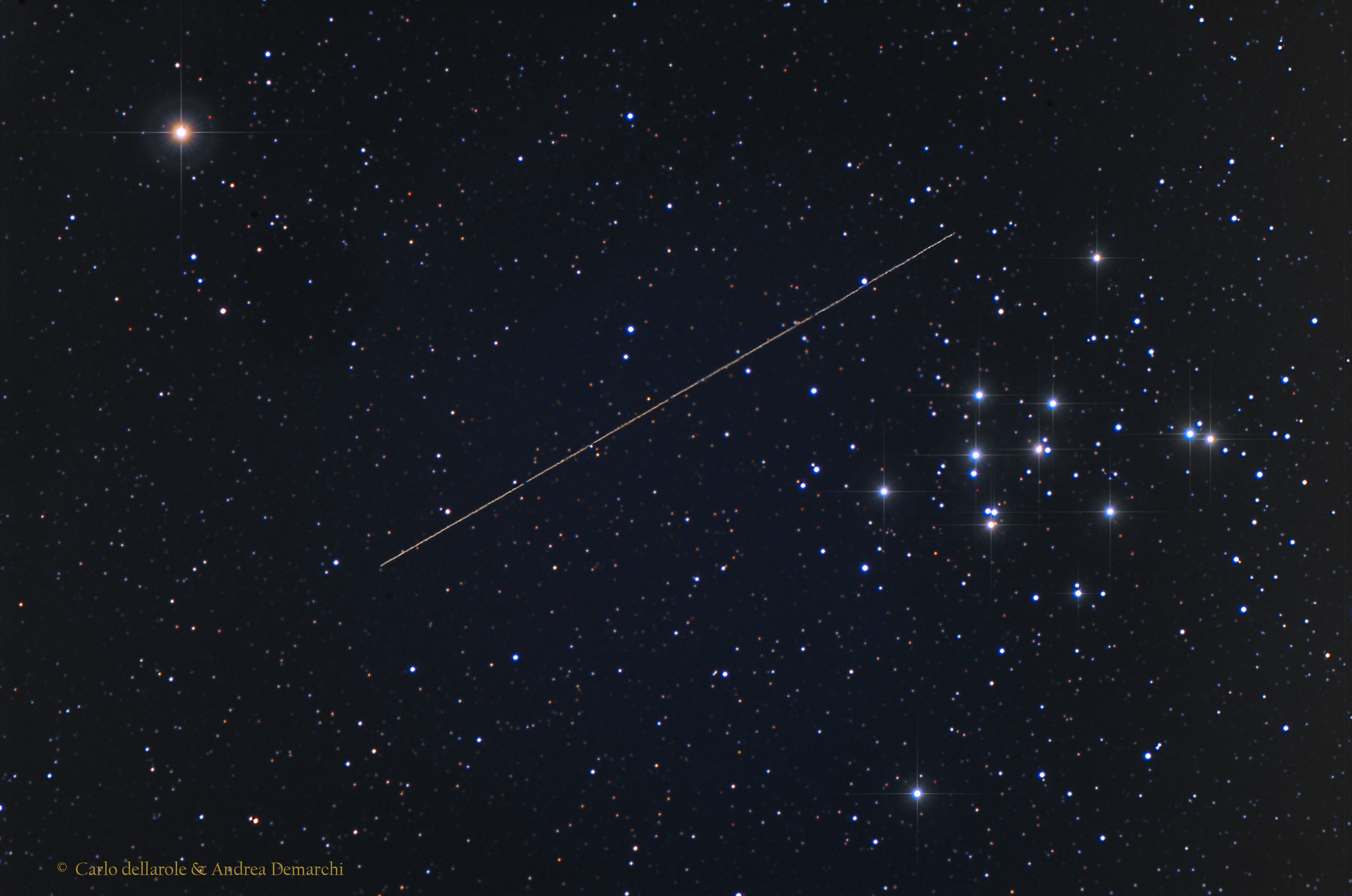
Copyright:Carlo Dellarole,
Andrea Demarchi
原文:
On Monday, January 26, well-tracked asteroid 2004 BL86 made its closest approach, a mere 1.2 million kilometers from our fair planet. That’s about 3.1 times the Earth-Moon distance or 4 light-seconds away. Moving quickly through Earth’s night sky, it left this streak in a 40 minute long exposure on January 27 made from Piemonte, Italy. The remarkably pretty telescopic field of view includes M44, also known as the Beehive or Praesepe star cluster in Cancer. Of course, its close encounter with M44 is only an apparent one, with the cluster nearly along the same line-of-sight to the near-earth asteroid. The actual distance between star cluster and asteroid is around 600 light-years. Still, the close approach to planet Earth allowed detailed radar imaging from NASA’s Deep Space Network antenna at Goldstone, California and revealed the asteroid to have its own moon.
中文翻譯:
在1月26日,持續受到追踪的小行星2004 BL86以1.2百萬公里的距離接近我們的地球,這大約相當於地球與月球之間距離的3.1倍或約4光秒。小行星在地球的夜空中快速穿梭,於1月27日在意大利的皮埃蒙特拍攝了這張長達40分鐘的曝光照片。照片中可見美麗的天文視野,包括天蟹座的M44星團,也被稱為蜜蜂星團或普拉西比星團。然而,這次小行星與M44的近距離接近只是表面現象,實際上它們幾乎在同一視線上,實際距離約為600光年。儘管如此,這次小行星與地球的近距離接觸使得NASA的深空網絡加州金斯通天線能進行詳盡的雷達成像,並揭示該小行星擁有自己的衛星。
#小行星 #2004BL86 #M44 #蜜蜂星團 #普拉西比 #天文觀測 #太空探索 #NASA #雷達成像 #天文學 #近地天體
來源:NASA每日圖片


